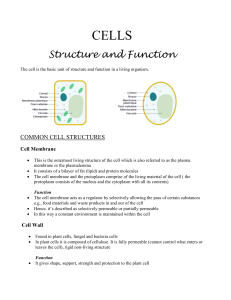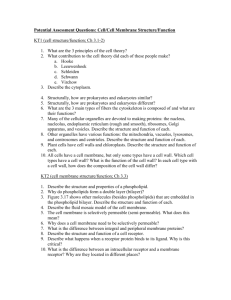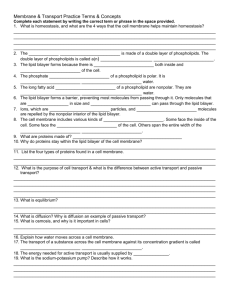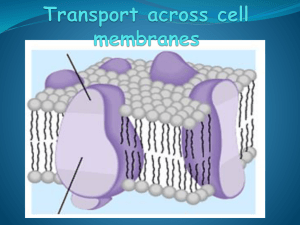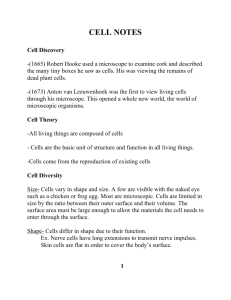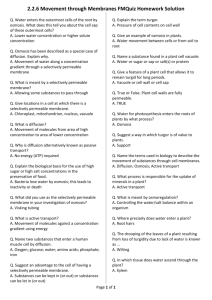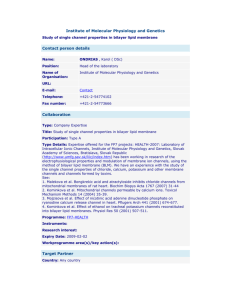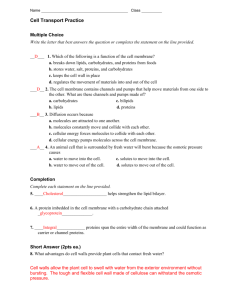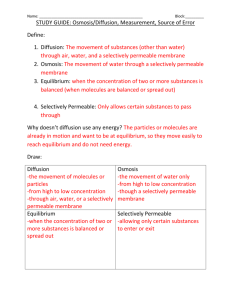cell membrane
advertisement
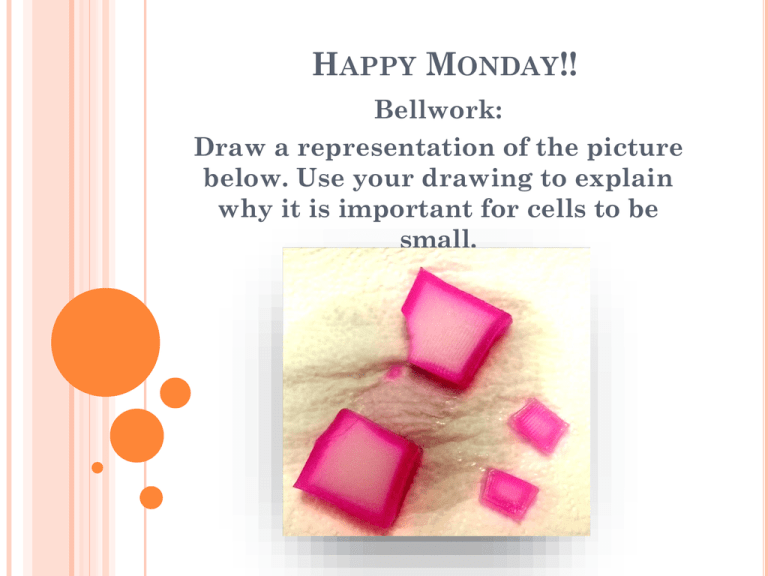
HAPPY MONDAY!! Bellwork: Draw a representation of the picture below. Use your drawing to explain why it is important for cells to be small. SCIENCE FACT OF THE DAY: A PILOBOLUS FUNGI SHOOTS ITS SPORES AT A TOP SPEED OF 25 M/S. IT REACHES THESE SPEEDS IN 2 MILLIONTHS OF A SECOND. ACTIVITY: Open your journals Set up page number __17__ for Cornell Notes Your first entry on the left hand side should be “Observations”. You should all have a set of random objects at your tables. For the next 10 minutes you will explore and record as many observations as you can about the items at your table. (CHAMP) Write down ANYTHING you observe. There are no right or wrong answers. TODAY’S ESSENTIAL QUESTION What is a membrane and what is it’s purpose? What did you observe in the activity and how does it relate to the essential question? ALL CELLS ARE SURROUNDED BY A THIN, FLEXIBLE BARRIER KNOWN AS A CELL MEMBRANE. WHAT IS THE CELL MEMBRANE’S FUNCTION (JOB)? (2 THINGS) 1) TO REGULATE WHAT ENTERS AND LEAVES THE CELL 2) TO PROVIDE PROTECTION AND SUPPORT. MEMBRANES FALL INTO THREE CATEGORIES… They can be permeable, meaning that the membrane is penetrable and will allow liquids, particles and gasses to pass through it. Which of the objects from the activity were completely permeable? They can be impermeable, meaning that the membrane is not penetrable and will NOT allow liquids, particles or gasses to pass through it. Which of the objects from the activity were completely impermeable? Finally, they can be Selectively permeable, meaning that some substances can pass across while others cannot. Biological membranes, like the ones around your cells, are selectively permeable. Which of the objects from the activity were selectively permeable? WHAT IS THE CELL MEMBRANE MADE (COMPOSED) OF? (3 TYPES OF MOLECULES) The cell membrane is composed of a double-layered sheet called a lipid bilayer. Bi- means 2 DRAW THIS! Also called the phospholipid bilayer PROTEINS ARE EMBEDDED IN THE LIPID BILAYER. Proteins form channels or pumps that help move large materials across the cell membrane. Carbohydrates are attached to many proteins embedded on the outside of the bilayer. The carbohydrates allow individual cells to identify one another. HOMEWORK http://youtu.be/yF1J8l jEZDw Alyssa Dolny Molecule Transport
